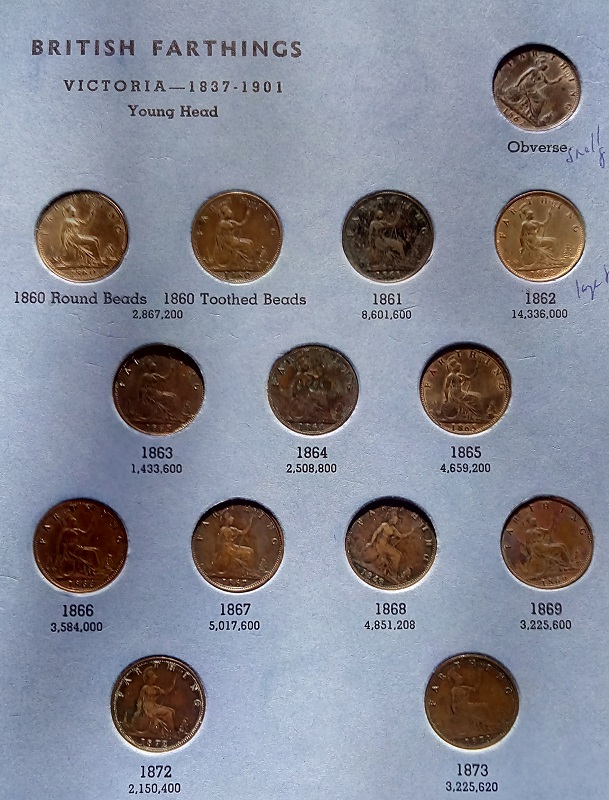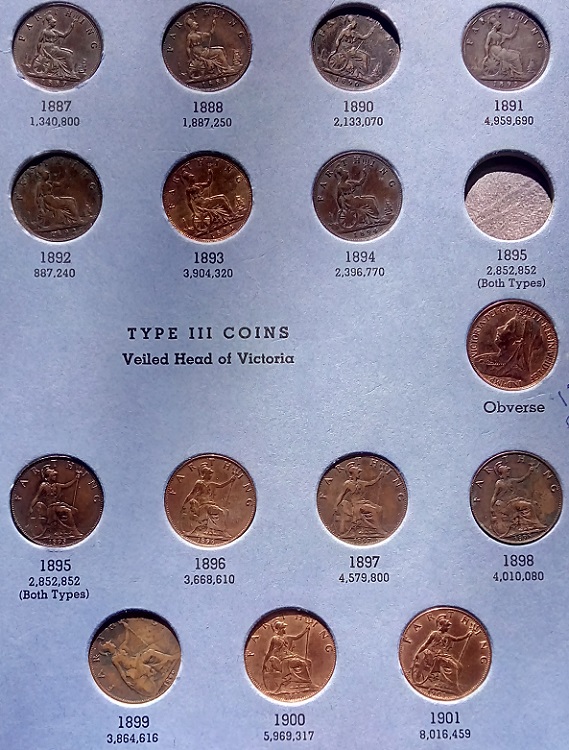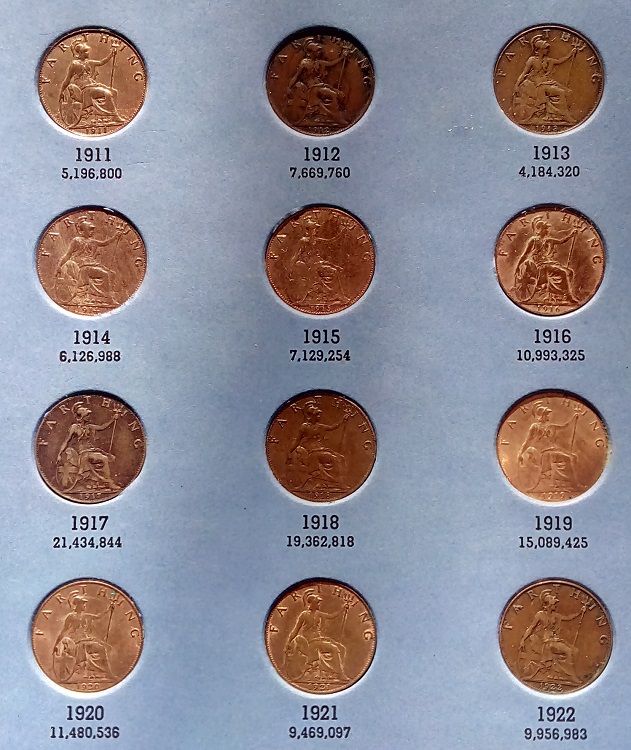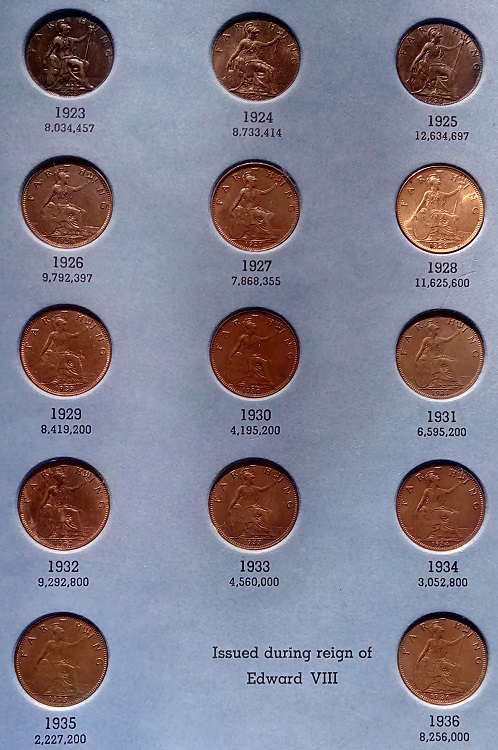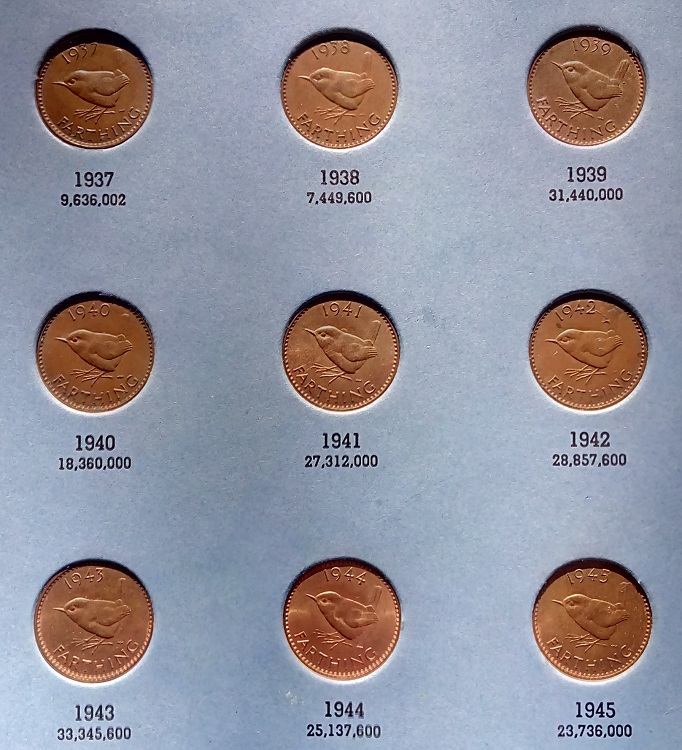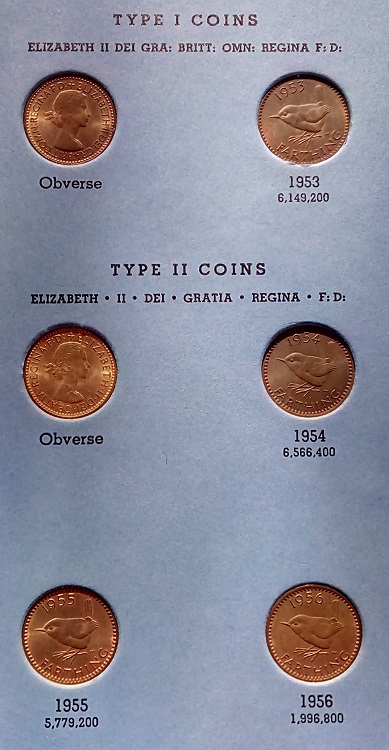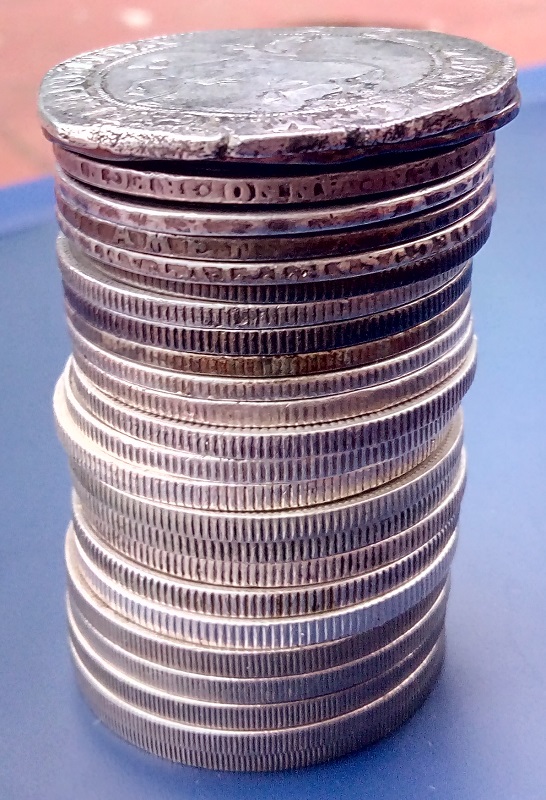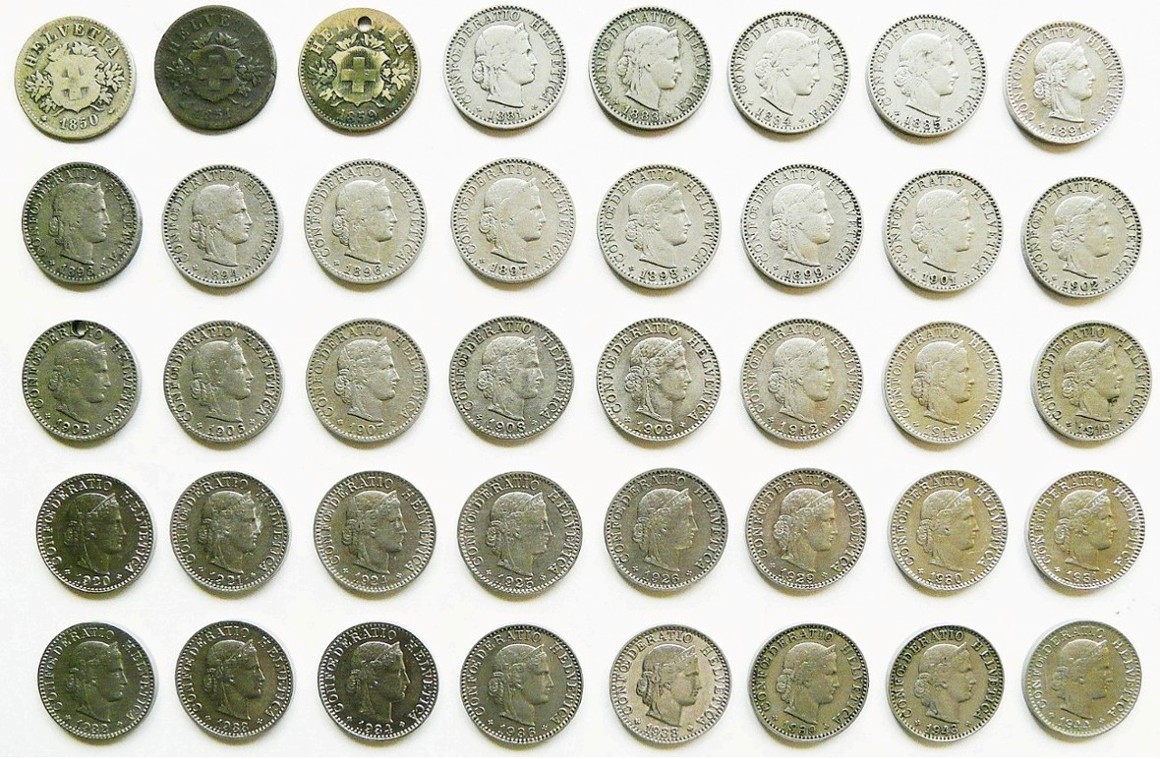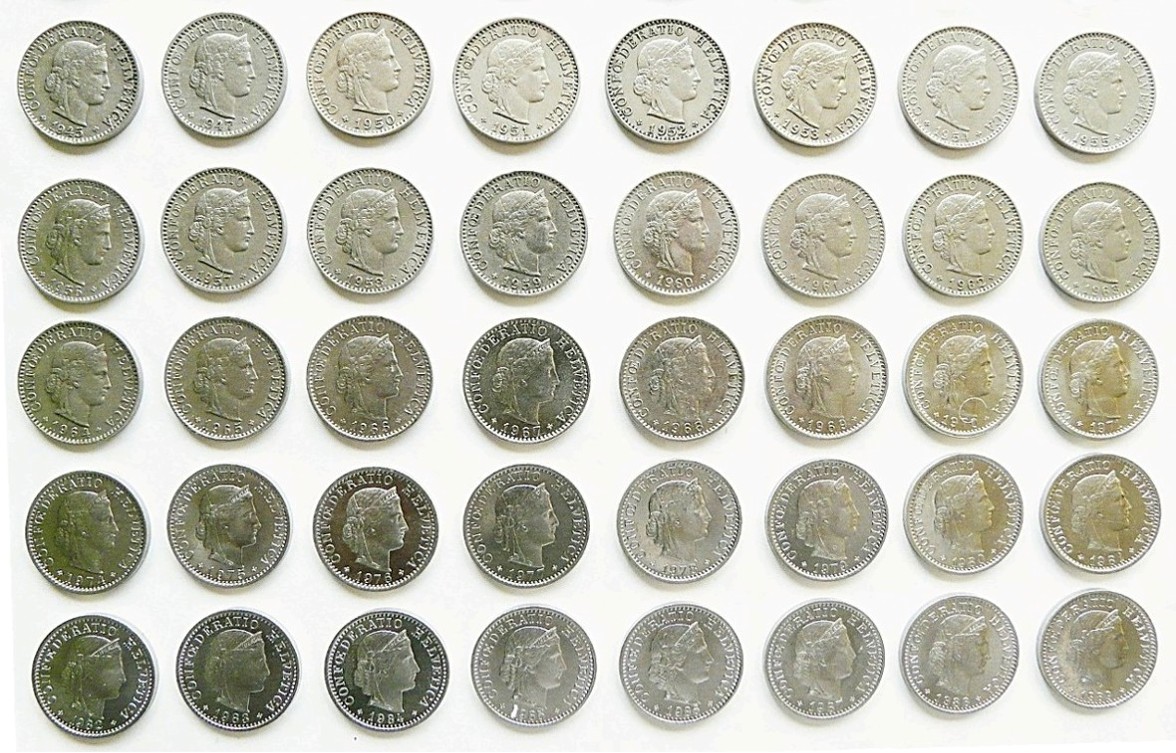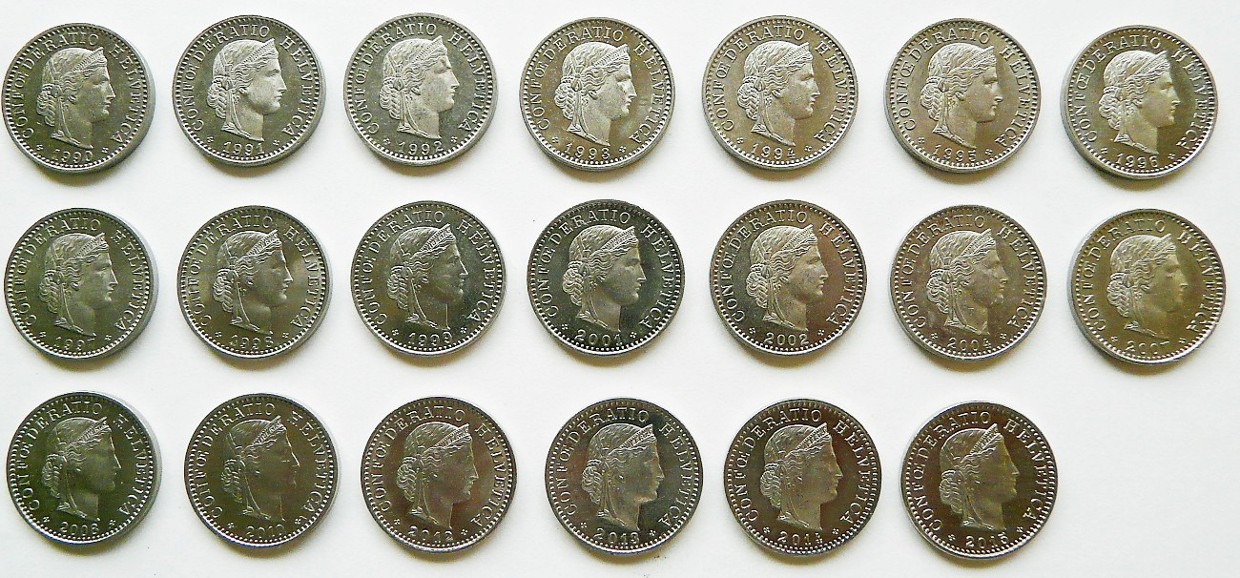Part 1 Tails then heads
CAVALIERS TO FLARES!The coins I show are exemplars and with the exception of the pre 1800 coins, are not always the first year of their type. With the exception of pre 1816 coins which are all very collectable and hard to find, each coin changes very little from the last, but over time, the change through 3 centuries is remarkable,
from the time of Cavaliers to Flares!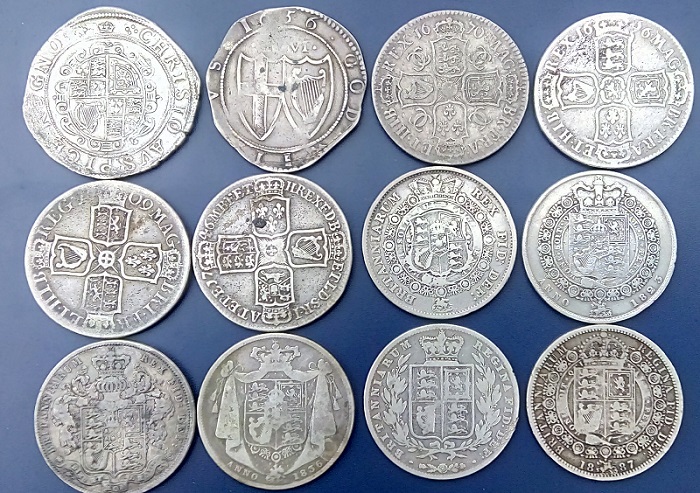 Top row
Top row - 1635/6 Charles I, 1656 Commonwealth, 1670 Charles II, 1696 William III, (First 2 hammered, then milled)
Middle Row - 1709 Anne, 1746 George II, 1816 George III (First bull head portrait), 1823 George IV type 2 (Last two steam press made)
Bottom Row - 1825 George IV type 3, 1836 William IV, 1845 Victoria Young head, 1887 Victoria - Jubilee Jead
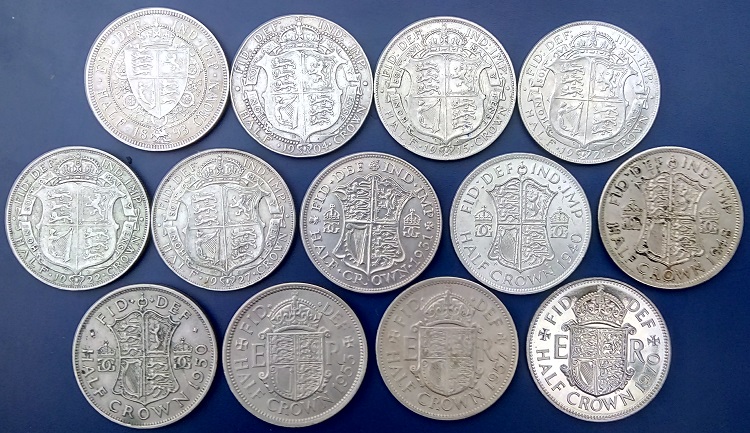 Top Row -
Top Row - 1893 Victoria Old Head, 1904 Edward VII, 1915 George V, George V 1921 Reduced silver,
Middle Row - 1922 George V corrected crown and groove line, 1927 George V - Modified effigy (Other side more useful here!), 1931 George V - Kruger Gray Obverse, 1940 George VI Silver, 1948 George VI - Cupronickel
Bottom Row, 1950 George VI - No Ind Imp, 1953 QE2 - with Omn, 1957 QE2 - No Omn, 1970 QE2 - Proof and last year of Halfcrown.
The Halfcrown started with a goldcoin in 1544 and became a silver coin in 1551 during the reign of Edward VI, Gold and silver Halfcrowns continued through the reigns of Elizabeth and James I (1558 - 1625). In the reign of Charles I it became and remained a "silver" denomination.
Siege halfcrowns were also issued in the Civil war (1640s) and a plain hammered coinage in the Commonwealth, a 1631 milled coin exists and is rare, In 1656/58 Milled patterns were made for Cromwell, but are superrare.
The first coins of Charles II were hammered, but milled coinage was phased in between 1662 and 1669 for all denominations with my 1670 coin being an early milled one. Milled coins had regnal years and "Decus et Tutamen" on the edge to stop clippers and counterfeiters. Until 1832 Coin uttering (Couterfeiting or altering) could be punished by death and at least transportation.
Regular issues carried through to 1751, when a huge shortage of coins meant no more half crowns were issued until 1816. In 1689/90 gun money halfcrowns were also made out of gun metal in the Irish conflict between Catholics and Protestants.
In 1816 regular halfcrown issues resumed with proper steam made coins giving a perfectly round piece. The late Georgian kings went through a dizzying number of obverse and portrait changes in a few years, but William IV had just one and Victoria had just 3 over her 60+ year reign, the last two in the last 14 years!
There were no halfcrowns at all between 1850 and 1874 and this was to promote the Florin, but they came back in 1874. In 1893 new obverses saw coins look nicer and grander making the coins look more imperial - now they were used in several white colonies and dominions. In 1902 a more beautiful shield obverse came and this survived to 1927.
In 1905 the rarest ever year of halfcrowns after 1841 was issued. In 1920 after WW1 the silver content was reduced to 50% from 92.5% but with 3 alloy changes which saw a quarternary alloy emerge in 1927 (50% Silver, 40% copper, 5% Zinc, 5% Nickel). A new series of designs came in 1927/28 and the 20s and 30s saw colonial halfcrowns issued in New Zealand, South Africa, Southern Rhodesia and the Irish Free State.
In 1937 new coins for Edward 8 were proofed, but never issued, patterns are rare, George VI started off with 50% silver, but in 1947 due to WW2 and a silver loan from the USA, the coins became Cupronickel. In the same year the king lost Indian and his empire, so the coins lost Ind Imp only in 1949.
The first Elizabethan coins had OMN BRITT (of all the Britons) on them but it was removed in 1954 - mainly as many British desceneded people lived all over the world, the Irish (Who are British Isles stock) were independent and the Empire was fragmenting, the coin survived as circulating coinage until 1969, with the last circulating coins dated 1967. The 1970 dated coin was a proof only issue and found in sets.
The new decimal coinage introduced in 1971 did not have
ANA equivalent coin for the Halfcrown, which would translate to 12½ new pence, hence they were removed before the other coins excepting the farthing which disappeared in 1960, although no mintages since 1956.
That summarises the British halfcrown.

















